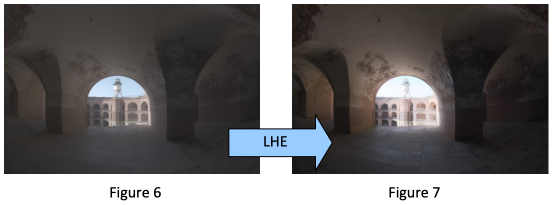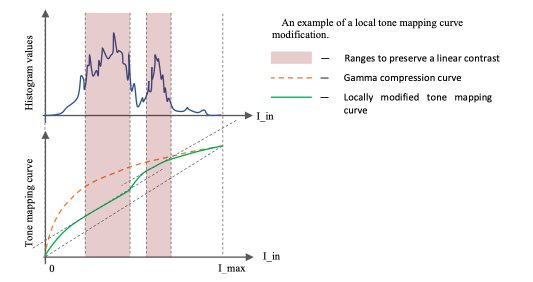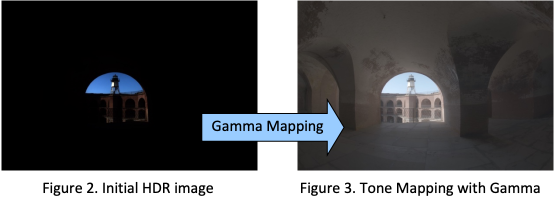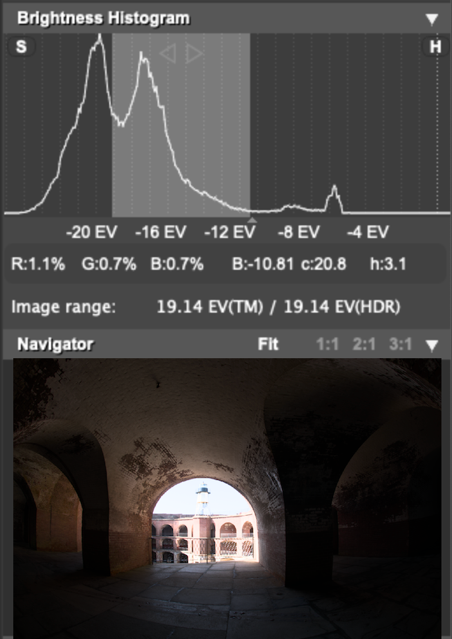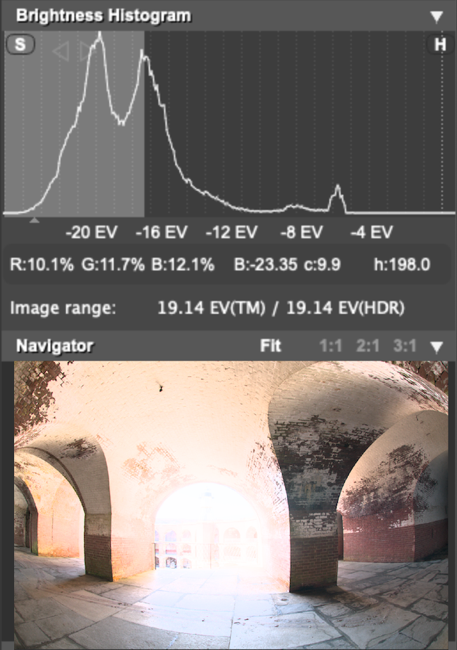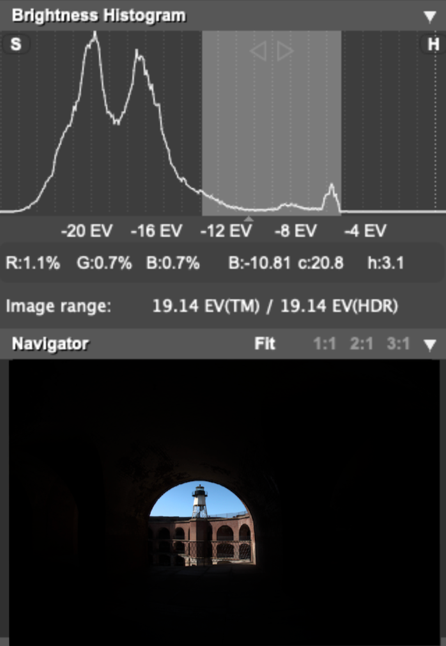Project Description
FOR IMMEDIATE RELEASE
Pinnacle Imaging SystemsTMLaunches Denali-MCTM HDR Image Signal Processor IP Core The HDR ISP core allows camera designers to move beyond the restrictions of current generation imaging sensors to deliver greater dynamic range unlocking new possibilities for image analytics. Belmont, C.A. –August 16, 2017–
Today, Pinnacle Imaging SystemsTM, announced the launch of its proprietary, Denali-MCTMcamera-ready HDR Image Signal Processor (ISP) IP core. This next generation HDR video capture technology relies on Pinnacle Imaging’s advanced algorithms to accurately tone map high contrast scenes while minimizing HDR motion artifacts. The Denali-MC HDR ISP is able to render vastly greater shadow and highlight data from a high contrast scene making it an ideal integration for camera designers seeking to optimize image detail for surveillance cameras, automotive ADAS cameras, intelligent traffic systems, commercial drones and machine vision systems. For more information, to view sample footage captured with the Denali-MC HDR ISP, or to reach a Pinnacle Imaging representative directly, please visit https://xfuse.ai.Industry Applications and ValidationThe Denali-MC HDR ISP cores are adapted from Pinnacle Imaging’s patented HDR technology modeled on true human vision. The technology ensures preservation of a scene’s true color fidelity and full contrast range throughout thetone mapping process, all without producing halos,color shifts,undesired motion artifacts, or requiring external logic. Denali-MC is able to streamline HDR deployment for developers, reducing hardware costs in the process.“At Fairchild Imaging, we havebeen very impressed with the Denali-MC ISPstate of the art locally adaptive tone mapping (LATM) functionality,” said Vern Klein, Director of Sales and Marketing Fairchild Imaging. “I’ve seenfirst-hand how they can make a great sensor perform even betterin its native WDR mode. Camera manufacturers will benefit from this technology, which provides high quality HDR functionality without requiring companion chips or additional hardware cost to support the algorithms.”As the demands on video analyticsbecome more complex, whether by end users or integrated autonomous systems,Denali-MC’s locally adaptive tone mapping technologydirectly results in moredetail forsurveillance video,intelligent traffic systems, commercial drones, machine vision, and body-worn cameras. For image analysis purposes, the rich source data can help improve automotive advanced driver systems, autonomous vehicle development, machine vision, and more.“Pinnacle’s new Denali-MC HDR ISP is a significant achievement addressing HDR video requirements in surveillance, monocular camera automotive markets and machine learning with its customization, artifact compensation, color accuracy and quantifiable high dynamic range of 100 dB,” said Paul Gallagher,image sensor industry veteran and futurist. “Camera system developers in these markets would benefit from utilizing these attributes of the Denali-MC ISP as a standalone ISP or integrate Pinnacle’s HDR IP blocks within their existing ISP.”Key Features of the Denali-MC HDR IP Core
For engineers and camera designers seeking to deliver the highest-quality video content, Denali-MC instantly provides a 16-bit data path capable of producing 100 dB or 16-EV steps of dynamic range. Denali-MC HDR IP completely eliminates halo artifacts and color shifts, and mitigates the ghost artifacts and transition noise often seen when merging multiple exposures. This allows Denali-MC to capture up to four exposure frames from 1080p video at 120 fps, while merging andtone mappingat 30 fpsin real time.For applications requiring faster output framerates, Denali-MC also supports a twoframe merge modeexporting at60 fps. Furthermore, Denali-MC can supportup to 29 different CMOS sensors, 12 different HDR modes and is easily ported to the most widely-used logic platforms. Integration with Third Party ISPsWhile Denali-MC is available as a complete camera ready ISP, Pinnacle Imaging’s Merge and Tone Mapping HDR IP cores can also be easily integrated into third-party ISPsmaking it ideal for developers and engineers seeking a stand-alone HDR solutionfortheir existing imaging pipeline.The merge block acceptsraw Bayer data as input and provides tone mapped Bayer data back to the ISP. “Pinnacle’s work in HDR and motion-artifact compensating algorithms is becoming well known and their HDR ISP development is state of the art,” said Bill Pu, CEO Leopard Imaging. Their new Denali-MC HDR ISP surpasses any other ISP I am aware of regarding its flexibility to be customizable and extensible to support many different sensors, logic and modes of HDR and over-all video quality.” Currently, available configurations have been developed for Xilinx® Zynq® FPGA platforms. Pinnacle Imaging is also able to provide customizable IP blocks for Altera/Inteland other FPGA platforms as well as ASIC implementation.HDR-Specific Features−Advanced motion compensation algorithms virtually eliminate HDR merge artifacts and transition noise −Proprietary Locally Adaptive Tone Mapping technology preserves color fidelity through the entire tonalrange without creating halo artifactsor color shifts−Automatic EV bracketing−Automatic or manual contrast adaptation for global or local video correction−React™ concurrent still frame and video capture feature, non-destructively extracts four source LDR Bayer images, merged Bayer HDR, tone mapped Bayer or HDMI RGB still frames without interrupting video−Ability to capture separate HDR and tone mapped output video streams concurrently (ideal for ADAS applications) −Two or four frame multiple exposure merge(with Sony IMX290 implementation)−HDR + Low illumination capabilities with Sony IMX290 sensor enable 24/7round the clock video capture capabilities for any contrast and lighting conditionStandard ISP Features−Automatic and manual exposure (including highlights/shadows auto tracking modes)
−Automatic and manual white balance −Auto gain−Digital black level and gain pre-compensation for RGGB−Black level and gain compensation−Veiling glare correction −Noise reduction−Local and global contrast adjustment (HDR)−Bad pixel correction−Automatic and manual Region of Interest (ROI) selection−Signal to noise measurements, histogram calculation−De-Mosaicing−50/60 Hz ambient artificial lighting sync−180° display rotationFor more information or to view sample footage captured with the Denali-MC HDR ISP, please visit https://xfuse.ai/. Engineers and designers looking to explore integration partnerships can visithttps://xfuse.ai/contact.About Pinnacle Imaging Systems CorporationHeadquartered in Belmont, C.A., Pinnacle Imaging Systems, the HDR experts, is defining the future of digital high dynamic range video. Built on a human vision model, its Ultra HDRTMtechnology delivers the utmost image detail to high contrast videoand provides 24/7round the clock capture capability, for any scene. Pinnacle Imaging licenses its technology for applications that demand maximum image data such as surveillance, law enforcement, drone cameras, automotive applications, machine vision systems, as well as professional and consumer still and video cameras, etc. More information about Pinnacle Imaging Systems can be found at: https://xfuse.ai/.Follow us on LinkedInand YouTube








